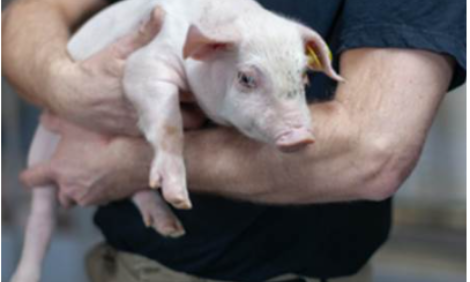



Hypothermia in Neonatal Piglets
Birth weight is the most important single factor in successful recovery from postnatal hypothermia, according to research from Aarhus University in which the interactions and causes of individual differences were investigated.Hypothermia is a major cause of mortality in neonatal piglets. However, there are considerable individual differences in the successful recovery from postnatal hypothermia in the common farrowing environment and so far, the causes and interactions of causes have not been studied in detail.
In their paper published in the Journal of Animal Science, T.S. Kammersgaard and colleagues at Aarhus University in Denmark explain that they used 635 crossbred neonatal piglets in their study to identify the links among different physiological and behavioural measures and their connections to the ability of piglets to overcome initial postnatal hypothermia, with rectal temperature at two hours old as the response variable.
The data included birth weight, hypoxia at birth (viability score and lactate in umbilical cord blood), latency to first udder contact and first suckle, scans of individual piglet position during the first two hours after birth, and rectal temperature at birth and two hours post-partum. A graphical chain model was used to analyse data.
The statistical variables were divided into blocks according to level (design and litter) and chronological order (prenatal, birth, perinatal, and thermoregulatory success at two hours) before applying the graphical model to the data.
Bayesian information criteria (BIC) were used for model selection. The BIC relates to maximum likelihood but introduces an additional penalty term for the number of variables. The strength of an association between two variables is reported as the increase in BIC (BICinc) due to removing the link.
Results indicate that at two hours, 22.1 per cent of the piglets had a rectal temperature below 37°C.
Of the 16 variables included in the model, only three had direct links to the response variable of rectal temperature at two hours. There was a positive relationship between rectal temperature at two hours and birth weight (BICinc = 26), and between being observed more often by the udder as opposed to alone during both the first (BICinc = 8) and second hours (BICinc = 19) after birth.
Lighter piglets and piglets that had experienced hypoxia took longer to achieve first suckle, which in turn affected where the piglet positioned itself during the first and second hours after birth.
Variables related to the birth process had no direct connection to thermoregulatory success, but were additive in the explanation of piglet behaviour.
The rectal temperature of individual piglets two hours after birth depends largely on piglet birth weight and on piglet position in relation to sow and littermates, concluded Kammersgaard and co-authors. They added that birth weight is the most important single factor in successful recovery from postnatal hypothermia.
Reference
Kammersgaard, T.S., L.J. Pedersen and E. Jørgensen. 2011. Hypothermia in neonatal piglets: interactions and causes of individual differences. Journal of Animal Science, 89 (7): 2073-2085 doi: 10.2527/jas.2010-3022
Further Reading
| - | You can view the full report (fee payable) by clicking here. |
August 2011








